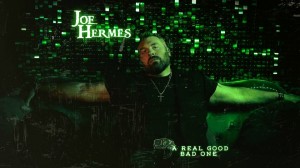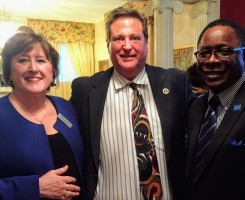A very happy New Year to all of you. Already in the past 72 hours, there has been quite a bit of new for 2022! From new babies, new songs and breaking news, to the traditional New Year's resolutions, new goals, and of course the ever popular, what you never knew was new in the lives of the rich and famous. We are, as a culture, all about turning over the pages of the past to new chapters in our lives. And for many of us, we have set our sights on pursuing our own vision and are ready to get going on the new year's road ahead. Packing layers of spontaneous energy, we enter the interstate ramp to highway 2022. As our journey begins and we check our review mirror, we catch a glimpse of 2021 as it becomes a picture of former things, an image, to be compressed and filed in a document labeled the past.
In making plans for the new year, it is often common to hear phrases such as , "I'm letting go of the past", "I'm leaving the past behind", "I'm moving forward and not looking back". In most cases, the experience wanting to be placed in that irretrievable location known as "the past" is a particularly unpleasant one, filled with emotional pain. While pain in any form is something most of us would preferably have removed from our lives, we also know, we can't. So it seems the best we can often do is make an effort to avoid it. But is that really what we want to do? Or perhaps are we choosing the option of avoidance because we don't kow what else to do? Could there be another way to understand our past, as well as the pain in our lives? Instead of wanting to leave it behind, could we understand the presence of our past as a place of meaning? I would like to address that pace, in the context of memory, pain, grieving, understanding and hope. First, let's take a look at memory and how our brains "store" the past.
Memory (generally described) as a cognitive process of the brain, is facilitated by multiple tasks of various cognitive "loops". These loops include auditory, articulatory, visual, tactile and spatial. Memory meaning is subject to emotional and affect information. From birth our brains are developing processing skills for interpreting our subjective experiences. Our brains store and use all of the information adaptively. Similar to a computer, our brains are excellent synthesizers, producing multiple programs for specific use from available memory information. Unlike a computer, our brains have a "mind" of their own and are miraculously able to create new programs apart from the particulars of stored information. On a routine basis, the available stored cognitive resources help us to navigate the daily interactions of life. Our brains are constantly updating memory files and installing new programs to maintain historical memories while also synthesizing new incoming data.
Possessing unsurpassable organizational accuracy and detail, our brains insure memory material is retrievable, with the right cue. Memory is not lost or erased except due to disease or damage. Memories exist in the brain as either processed or unprocessed. Processed memory is material synthesized and integrated into working memory. Unprocessed memory is material that due to emotional charge or content, remains unconsciously in circulation for indefinite periods or until it can be processed and integrated into working memory.
So, when New Year's comes around and one of our resolutions is to "forget the past" or "leave it behind", essentially we embarking on a task that cannot be voluntarily accomplished except by suppression, repression or blocking - all of which are mechanisms of defense and resistance, protection from further wounding and pain. What is required by our brains to be able to neutralize the negative impact of the memory is to process it in a safe and healing environment so that painful associations with a memory can have freedom and room to be cared for. This allows for the growth of new connections, which offer new perceptions regarding relationship to life. With new perceptions, memory can be updated with new information which can be integrated into our total life experience.
The processing of painful memories naturally involves revisiting our past. Although a place of reluctance and discomfort, it is rich with value and meaning. For it is in those uncomfortable places we often find the wisdom and growth which enables us to understand our past as part of our whole. Relationship researcher and author John Gottman, speaks about the past this way; "The past is never the past until we bring it into the present." Using a metaphor of color, this quote helps remind us, that the colors that painted our relational connections regarding emotions, feelings, and behaviors in our early childhood will be the same colors we paint with in our relational connections as adults. Poor relational patterns experienced in childhood, will be the patterns of the adult. If we can understand this perspective, hopefully we can begin to accept the need to learn to connect and relate in new ways to our lives and with those people who are a part of it.
For us to know how we want to relate, it is beneficial to first understand how we don't want to relate, as well as the reasons why the way we have related in the past hasn't worked. Reflecting in this manner, we are provided greater clarity for our relationships and life visions. As we begin to be open to change and healing, there will be a likelihood of coming face to face with sorrow and grieving over our past. In my experience, the grief reflects a sorrow for what I did not know or what I may have been blinded to. I also found this place of grief to be where beauty begins, love sprouts, joy finds roots and hope grows.
From a spiritual perspective, this place can be a gift of humility, a setting aside of any masks we may have been wearing. In this place, we are free to accept ourself with all of our weakness and our strengths. One of the pieces of authenticity in identity, it is in this place we also find freedom and a unique peace. It also can be a place where we are now free to discover and understand those hidden places of self.
Christine Paintner, PhD, author of Lectio Divina, published in 2011, describes the desire to relate differently to life and have different awarenesses as a place where we "become present to our emotional landscape and the way our heart is stirring in response to words we have heard... we can come to deeper insights about who we are called to be and what we are called to do. When we engage at this deep soul level we will experience not only joy but also sorrow. Joy arrives with a deeper understanding of who we truly are; sorrow arises when we grieve over how long we have lived in inauthentic ways." And the tears that may be a part of this experience can water our heart, being a witness of tenderness and compassion for ourselves.
So, as the new year begins, I hope instead of setting a goal to "move forward without looking back", you might be open to consider revisiting the past and any pain it may hold and allow it to bring its many gifts to you. For I would love for you to experience unique peace and hope - that thing with feathers that perches in the soul and sings the tunes without words and never stops at all.
The Healing Time
Finally on my way to yes
I bump into
all the places
where I said no
to my life
all the untended wounds
the red and purple scars
those hieroglyphs of pain
carved into my skin, my bones,
those coded messages
that send me down
the wrong street
again and again
where I find them
the old wounds
the old misdirections
and I lift them
one by one
close to my heart
and I say holy
holy.
© Pesha Joyce Gertler
Paulette Jackson
phot credit for the art piece: Hope is the thing 418c8cafb5db1197d3419183755a8f27













